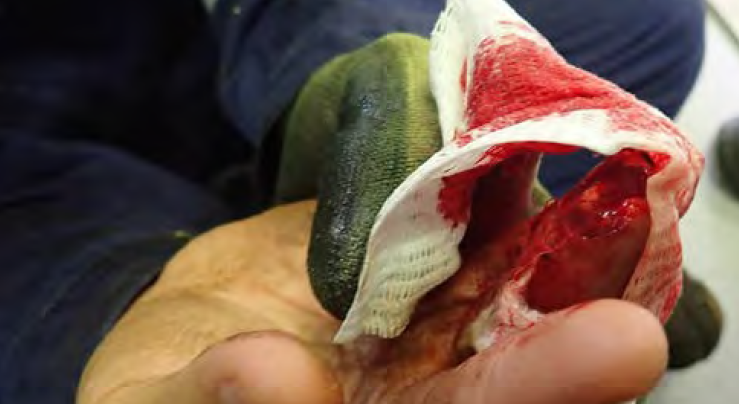In April Safety Digest, UK MAIB focuses on a multi-national crew which was conducting drilling operations, when a deck cadet’s fingers became caught under the fall wire, which resulted in two of his fingers being traumatically amputated. The cadet was immediately provided with first-aid onboard, and was then transmitted ashore to the local hospital for emergency treatment before being repatriated home a few days later to recover.
The Incident
The regular launching and recovery of the ship’s lifeboats formed part of the ship’s training schedule. As the ship was alongside for the afternoon, permission was obtained from the port authority to launch the ship’s starboard lifeboat to the water.
Under the command of the chief officer, the bosun lowered the empty lifeboat to the water. The four crew members boarded the lifeboat from the service boat and completed in-water running tests. Because of a slight swell in the harbour, it was decided not to take the lifeboat away from the ship’s side. When the tests were complete, the crew made the lifeboat ready for hoisting and disembarked into the service boat.
Once the lifeboat was ready, the chief officer gave the order and the bosun started to hoist the lifeboat using the electric motor. Unnoticed by the bosun, the cadet stepped forward to grease the fall wire by letting it run through his hand close to the winch drum as the boat was being heaved up.
Without warning the cadet’s hand became stuck to the wire and his fingers became trapped under it as it was being wound onto the drum. Because his hand was so close to the drum, his warning shouts did not give the bosun enough time to stop the hoist motor before his fingers were trapped and traumatically amputated between the wire and the drum.

Lessons Learned
- It is essential that seafarers are familiar with the life-saving systems on board their ships and that they perform regular drills. Abandon ship drills should be planned, organized and carried out so that the recognized risks are minimized. In this case, the lifeboat drill followed correct procedures: the boat was lowered empty, before a dynamic risk assessment identified that taking it off the hooks when it was in the water would introduce an unnecessary hazard. The benefits of taking a moment to re-assess site safety cannot be overstated.
- Although most wire rope is supplied to ships pre-lubricated, protecting exposed wire rope is a necessary part of the maintenance procedure to prolong its life. Greasing a wire by running it through someone’s hands can be very dangerous, particularly if the grease is old, cold, thick and sticky; and gloves and skin can be caught on a broken wire. Greasing a moving wire should only be undertaken with great care after thorough risk assessment, and by using a brush, spatula or an automated lubrication system. Not, as in this case, by hand.
- There were two tasks being undertaken. First, the lifeboat drill, and second, the greasing of the wires. Because the toolbox talk included them together, the cadet was unclear when to undertake the greasing task. Great care must be taken to ensure all participants fully understand their role, particularly on vessels with mixed nationalities. Trainees and less experienced crew require closer supervision and help. Toolbox talks must be short, simple and focused on one subject at a time.






























































